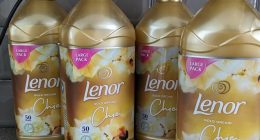
OK, you have your rubber band (hopefully). Take it and stretch it with your hands, and keep it stretched. Now touch the stretched rubber band to your lip (which is very sensitive to temperature changes). You should be able to feel the rubber band is warmer than room temperature. Don’t let the rubber band relax, just keep it stretched for a little while (30 seconds at least). It should cool off back down to room temperature. The next part is the best. Finally let that rubber band return to its normal length. Touch it back to your lip and you can feel the rubber band is now cold.
So, here’s what happened. Stretching the rubber band makes it warm up. If you just let it return back to its original length right away, nothing interesting happens. However, by letting the stretched rubber band cool down to room temperature, it still decreases in temperature when it returns to its relaxed state—but now it ends up colder than room temperature.
This is exactly what a refrigerator does—except not with rubber bands. Instead it uses some type of liquid gas called a refrigerant (there are many different chemicals you could use here). You could start with the refrigerant as a gas and compress it until it becomes a liquid. This compression makes the refrigerant warm up. The next step is to let the compressed refrigerant cool off on the outside of the refrigerator. Now you can put the refrigerant inside the fridge and let it expand back into a gas, and it cools off—much colder than room temperature. That’s how you keep your food cold.
But what’s different about the –80 degree freezer for vaccine storage? It turns out that it’s pretty much impossible to get the inside temperature of the freezer down to –80°C with your normal refrigerant. Instead, you need TWO sets of refrigerants. It’s sort of like a freezer inside of a freezer. The outer freezer is pretty much like the one in your kitchen. The inner freezer uses a different refrigerant (maybe isopropyl alcohol) so that when it’s compressed, it can cool off inside of the normal freezer. But having two compressors is what makes these more expensive. Oh, do you want to see a picture?
This is the freezer in the biochemistry lab at Southeastern Louisiana University. Now you know what it looks like.
Dry Ice
I told you there was something you might be able to find that was at –80°C, and it’s dry ice—solid carbon dioxide. To make dry ice, you start with carbon dioxide gas. This carbon dioxide gas is then cooled and compressed into liquid carbon dioxide. Then, when the liquid carbon dioxide is removed from pressure, it turns into a gas again. But this phase transition also decreases the temperature and gets it cold enough to freeze at –80°C to become a solid.









